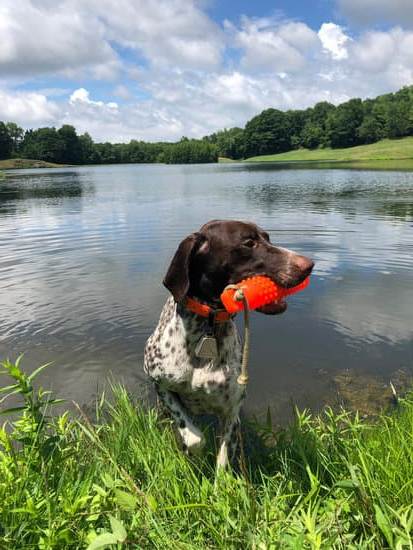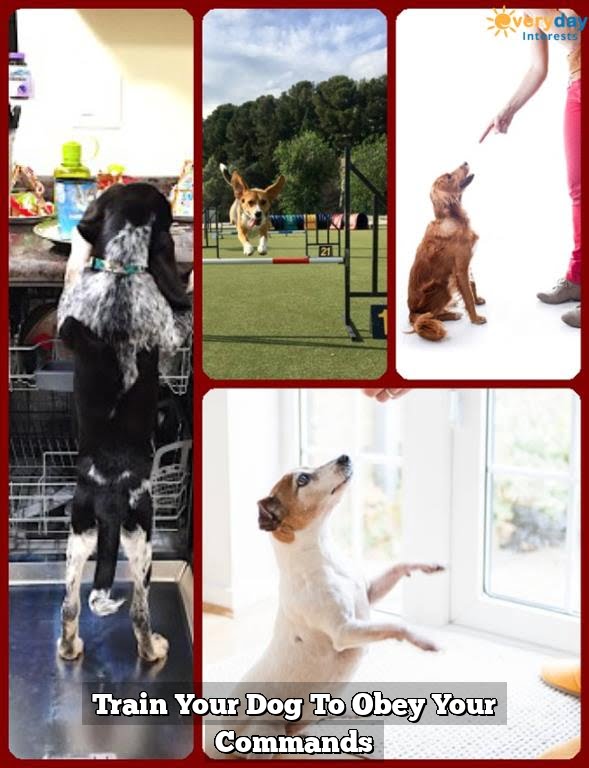Are you wondering, “How to train a dog to obey me“? Dog training is essential for both the well-being of your pet and your own peace of mind. Without proper training, dogs can be unruly, disobedient, and even pose a danger to themselves and others. Training is not only about teaching your dog commands; it’s about building a strong bond based on trust, respect, and clear communication.
Choosing the right training method for your dog is crucial in ensuring successful obedience training. Understanding your dog’s breed, temperament, and individual personality will help you tailor your training approach to their specific needs. Whether you opt for positive reinforcement techniques or more structured obedience training methods, it’s important to find what works best for your furry friend.
Establishing leadership and trust forms the foundation of all successful dog training. Your dog needs to see you as the leader of the pack in order to follow your commands consistently. Building a trusting relationship with your pet through clear communication and consistent boundaries will lead to a more obedient and well-behaved companion.
Choosing the Right Training Method for Your Dog
When it comes to training your dog, it’s important to choose the right training method that works best for your furry friend. Every dog is unique and may respond differently to various training techniques. Before starting any training program, it’s crucial to understand the different methods available and select the one that aligns with your dog’s temperament and behavior.
Positive Reinforcement Training
One of the most effective and widely used training methods is positive reinforcement. This approach involves rewarding your dog with treats, praise, or toys when they exhibit good behavior or obey a command. Positive reinforcement creates a positive association in your dog’s mind and encourages them to repeat the desired behavior in order to receive a reward.
Clicker Training
Clicker training is another popular method that utilizes a small handheld device that makes a clicking sound. The clicker is used to mark the precise moment when your dog performs the desired behavior, followed by a reward. This clear and consistent communication helps your dog understand what they did right and reinforces their obedience.
Alpha Dog or Pack Leader Method
The alpha dog or pack leader method emphasizes establishing yourself as the leader of the pack. This approach involves setting rules, boundaries, and limitations for your dog while also providing praise and rewards for obedience. By showing leadership and earning trust, you can train your dog to recognize you as their leader and willingly obey commands.
Understanding the different training methods available will help you make an informed decision on how to train a dog to obey me based on what will work best for both you and your pet. Remember that each dog is unique, so be patient, consistent, and ready to adjust your approach as needed for successful training results.
Establishing Leadership and Trust
When it comes to training your dog to obey you, one of the most important steps is establishing yourself as the leader and building a trusting relationship with your furry friend. Here are some tips and techniques to help you achieve this:
1. Lead by example: Dogs are adept at picking up on our body language and energy, so it’s essential to exhibit calm, assertive leadership. This means setting clear boundaries and rules for your dog to follow.
2. Consistency is key: Set consistent rules and boundaries for your dog and make sure everyone in the household enforces them. Inconsistency can lead to confusion for your dog, making it harder for them to understand what behavior is expected of them.
3. Bond through positive reinforcement: Rewarding good behavior with treats, praise, or playtime will not only motivate your dog but also strengthen your bond with them.
By following these tips, you can start building a strong foundation of trust and leadership with your dog, which will be crucial as you move forward in training them to obey commands effectively.
Remember that every dog is unique, so be patient and observe how your canine companion responds to different methods. With time and effort, you’ll soon see progress in how well they obey you.
Teaching Basic Commands
Teaching your dog basic commands is an essential part of training and can help establish a strong foundation for obedience. The key to success in this aspect of training is patience and consistency. It’s important to understand that every dog learns at their own pace, so it may take some time before your dog fully grasps these commands. Using positive reinforcement techniques such as treats, praise, and toys can be very effective in encouraging your dog to obey commands.
Sit, stay, come, and leave it are the four basic commands that every dog should learn. To teach your dog to sit, hold a treat close to their nose and then slowly move your hand up allowing their head to follow the treat and causing their bottom to lower. Once they are in the sitting position, say “sit” and give them the treat immediately.
For teaching your dog to stay, start by commanding them to sit, then with an open palm facing towards them, take a couple of steps backward saying “stay.” If they remain seated, reward them with a treat and praise.
When it comes to teaching your pet the “come” command in a safe supervised area like a garden or home where you know there won’t be any distractions. Use different tones of voice when giving out these commands for example will instill emphasis on what you’re trying to accomplish; for ‘leave it’ use a firmer tone than if you might use if you want him/her come back after running around.
| Basic Command | Training Technique |
|---|---|
| Sit | Use treats and move hand upwards |
| Stay | Command sit then slowly take steps back |
| Come | Use different tones of voice in safe areas. |
Positive Reinforcement Techniques
When it comes to training your dog to obey you, positive reinforcement techniques have been proven to be the most effective method. This approach involves rewarding your dog for demonstrating the desired behavior, which encourages them to repeat it in the future. Here are some positive reinforcement techniques that you can use to train your dog effectively:
- Clicker training: This method uses a clicker device to create a consistent sound that marks the moment your dog performs the correct behavior. It is then followed by a treat or praise, strengthening the association between the action and the reward.
- Treat rewards: Using small, tasty treats as a reward for good behavior is an effective way to motivate your dog. Make sure to use treats that your dog finds irresistible and reserve them exclusively for training sessions.
- Verbal praise: Dogs respond well to verbal praise and affection from their owners. When your dog follows a command correctly, provide enthusiastic praise and petting as a form of positive reinforcement.
By incorporating these positive reinforcement techniques into your training routine, you can effectively teach your dog how to behave in a manner that pleases you. Remember to be consistent with rewards and always pair them with the desired behavior. Over time, your dog will learn to associate obedience with positive outcomes.
Patience and consistency are key when using positive reinforcement techniques – it may take time for your dog to fully understand what is expected of them. Celebrate small victories and continue reinforcing good behaviors, gradually increasing expectations as your dog becomes more proficient.
Ultimately, positive reinforcement not only helps in teaching obedience but also strengthens the bond between you and your furry companion.
Patience and Consistency in Training
Training a dog to obey commands takes patience and consistency. It is essential to understand that every dog is different and will progress at their own pace. Consistency in training means using the same cues, commands, and rules each time you work with your dog. Patience is key in allowing your dog to learn at their own pace without feeling pressured or stressed.
Setting Realistic Expectations
When training a dog to obey you, it’s important to set realistic expectations. Understand that dogs may not pick up on commands immediately and may require repeated training sessions to truly grasp a new concept. Avoid getting frustrated if your dog does not respond right away, as this can hinder their progress. Keep in mind that consistency and patience are crucial for successful obedience training.
Creating a Training Schedule
To train a dog to obey you successfully, create a consistent training schedule. Regular training sessions help reinforce positive behaviors and establish a routine for your dog. Short and frequent sessions are more effective than long, infrequent ones. This also helps prevent both you and your dog from becoming overwhelmed or bored with the process. By sticking to a regular schedule, you can build upon previous lessons and gradually introduce more advanced commands.
Seeking Professional Help
If you find yourself struggling with how to train a dog to obey me or if your dog is exhibiting challenging behaviors, consider seeking professional help from a certified dog trainer or behaviorist. These experts can provide guidance on effective training techniques tailored to your dog’s specific needs. They can also assist in addressing any underlying behavioral issues that may be hindering obedience training progress.
Addressing Behavioral Issues
When it comes to training your dog to obey you, addressing behavioral issues is an important step in the process. Every dog may have some behavior problems that need to be addressed before they can fully obey commands and instructions. One common behavioral issue among dogs is excessive barking, which can be disruptive and annoying. Another issue might be jumping on people, which can be a problem especially if you have guests over.
To address these behavioral issues, it’s essential to understand the root cause of the behavior. Most behaviors stem from anxiety, fear, lack of socialization, or a lack of mental and physical stimulation. Once the underlying cause is identified, it becomes easier to address and correct the behavior. For example, if a dog is barking excessively due to anxiety when left alone, providing toys or treats that keep them occupied can help reduce this behavior.
Using positive reinforcement techniques is also crucial in addressing behavioral issues. By rewarding your dog for good behavior and ignoring or redirecting unwanted behavior, you can effectively train them to understand what is acceptable and what is not. This approach helps build a strong bond between you and your dog while ensuring they learn how to behave properly in various situations.
| Behavioral Issue | Root Cause |
|---|---|
| Excessive Barking | Anxiety/Fear/Lack of Stimulation |
| Jumping on People | Excitement/Lack of Socialization |
Advanced Training
Once your dog has mastered the basic commands such as sit, stay, come, and leave it, you may want to consider advanced training such as off-leash, agility, and trick training. Advanced training helps keep your dog mentally stimulated and physically active, providing additional bonding time for you both.
Off-leash training is an important skill to teach your dog. It allows them to have more freedom while still being under control. Start off-leash training in a safe and enclosed area and gradually progress to more challenging environments. Using positive reinforcement techniques such as treats and praise will encourage your dog to obey you even when they are off-leash.
Agility training is also a great way to challenge your dog both mentally and physically. Agility courses typically include obstacles such as jumps, tunnels, weave poles, and a seesaw. Training for agility not only improves obedience but also strengthens the bond between you and your furry friend.
Trick training is another fun way to keep your dog engaged. Teach them fun tricks like rolling over, playing dead, or even dancing on their hind legs. Trick training can be a great way to showcase your pet’s intelligence and skills while creating a stronger connection with them.
Engaging in advanced training with your dog requires patience and consistency just like the basic commands do. The key is to make the training sessions enjoyable for both you and your pet while building a strong bond based on trust and respect.
Maintaining Obedience
Once you have successfully trained your dog to obey basic commands and exhibit good behavior, the next challenge is maintaining that obedience in the long term. Consistency is key when it comes to ensuring that your dog continues to follow your commands and behave appropriately. One of the best tips for long-term success in maintaining obedience is to continue practicing training exercises with your dog on a regular basis.
Another important aspect of maintaining obedience is to keep providing positive reinforcement for good behavior. This can include giving your dog treats, praise, or affection when they obey a command or exhibit the desired behavior. Positive reinforcement not only encourages your dog to continue listening to you, but it also strengthens the bond between you and your furry companion.
In addition to consistent training and positive reinforcement, it is crucial to continue establishing yourself as the pack leader in the relationship with your dog. By being a confident and assertive leader, you will earn your dog’s trust and respect, making them more likely to obey you.
Remember that building a strong bond with your well-trained dog requires ongoing effort and commitment on your part. With these tips and techniques, you can ensure that your furry friend remains obedient and well-behaved for years to come.
Conclusion
In conclusion, training your dog to obey you is a rewarding and worthwhile endeavor that can strengthen the bond between you and your furry companion. By understanding the importance of training and choosing the right method for your dog, you can set the stage for a successful training experience. Establishing leadership and trust, teaching basic commands, and using positive reinforcement techniques are essential steps in ensuring that your dog obeys you.
It’s important to remember that patience and consistency are key components of successful dog training. It takes time for dogs to learn new behaviors, so it’s crucial to remain patient and consistent throughout the training process. Addressing any behavioral issues that may arise is also important in order to maintain obedience over the long term.
Finally, advanced training such as off-leash, agility, and trick training can be a fun way to continue building on the obedience foundation you have established with your dog. By maintaining ongoing training and reinforcing good behavior, you can ensure that your well-trained dog continues to obey you for years to come.
In essence, by following these guidelines on how to train a dog to obey me, you can not only shape your pet into a well-behaved companion but also develop a strong bond built on trust and respect. The journey may have its challenges, but the result is a lifelong partnership filled with love, companionship, and an unbreakable connection between you and your loyal canine friend.
Frequently Asked Questions
How Long Does It Take for a Dog to Obey You?
The time it takes for a dog to obey you can vary depending on the dog’s breed, age, and temperament, as well as your consistency in training. Some dogs may learn basic commands in a few weeks, while others may take several months.
Can You Teach a Dog to Follow You?
Yes, you can teach a dog to follow you by using positive reinforcement techniques such as treats, praise, and consistent training. Start with basic commands like “sit” and “stay”, then gradually progress to walking on a leash and following you without pulling.
What to Do if Your Dog Doesn T Obey You?
If your dog doesn’t obey you, it’s important to first evaluate whether there are any underlying medical or behavioral issues causing the disobedience. Once ruled out, focus on reinforcing positive behavior, using rewards and consistent training methods. Seek professional help if needed.

Welcome to the blog! I am a professional dog trainer and have been working with dogs for many years. In this blog, I will be discussing various topics related to dog training, including tips, tricks, and advice. I hope you find this information helpful and informative. Thanks for reading!





